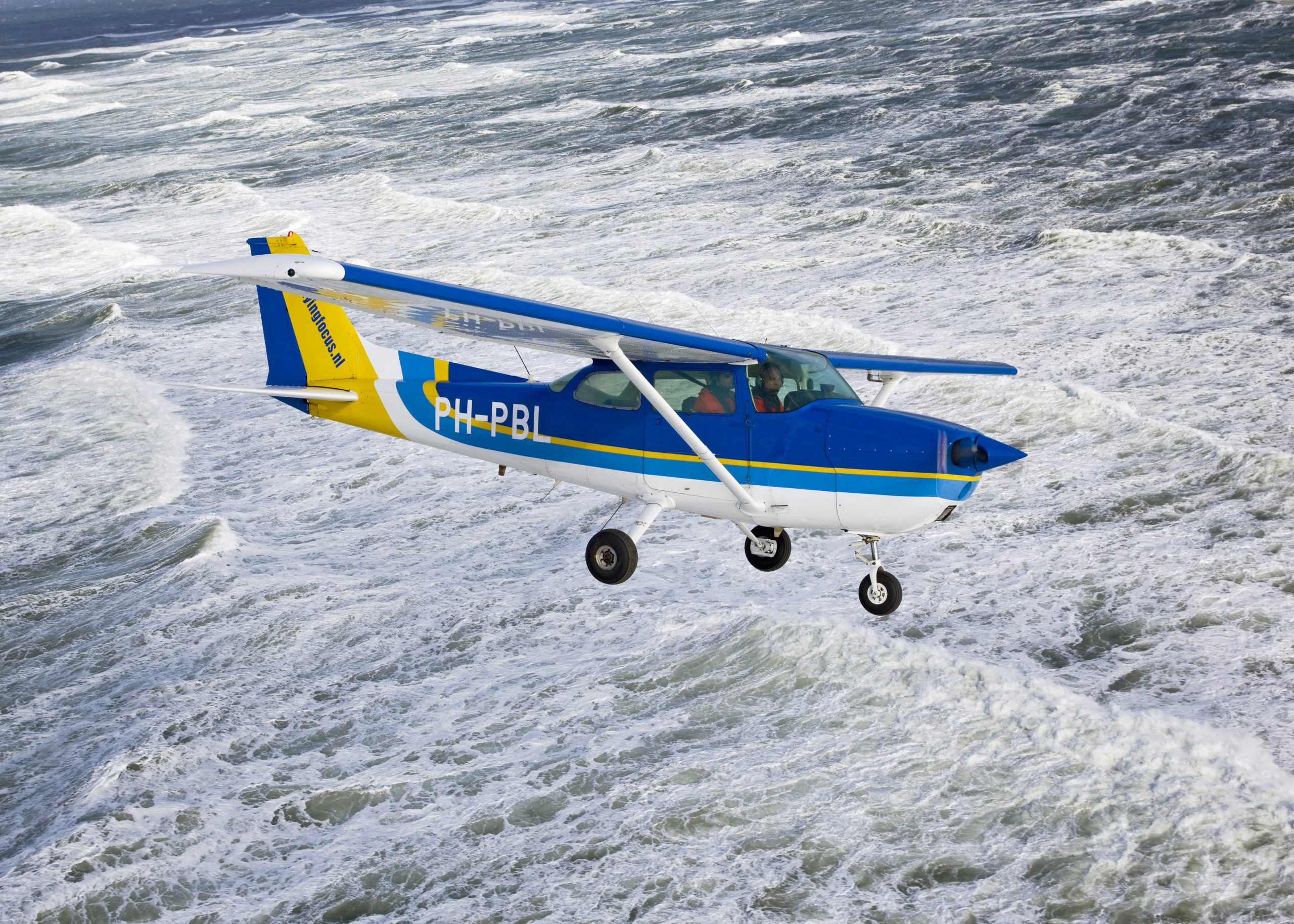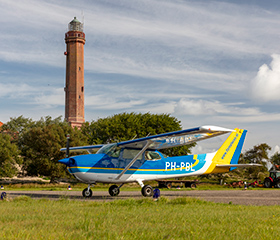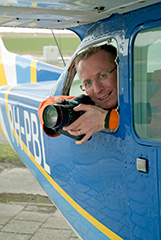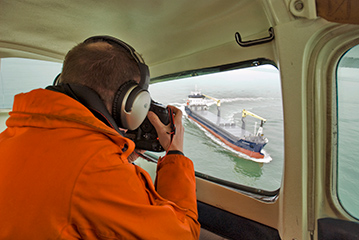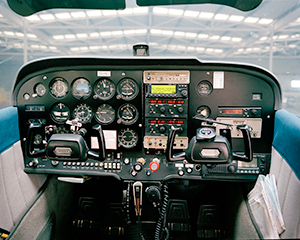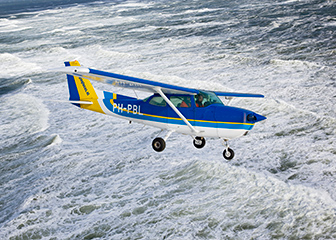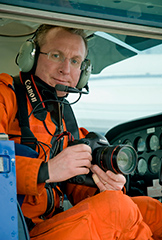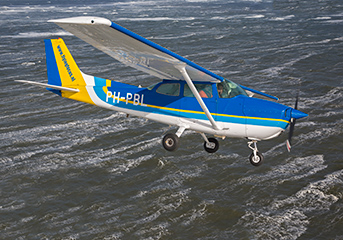The good old Cessna 172 is still operated all over the world. This aircraft first flew in 1957 and since then 43.000 of them were built! What makes this aircraft very suitable for aerial photography? Firstly its high wing design with good all around visibility. Furthermore there is enough space to move around, especially from the back seats, to use a wide angle for photography. And its performance in slow flight is very good and forgiving in case of too slow flying.
I spent a few thousand photo flying hours in a Cessna 172 since my first photo flight in 1985. Sometimes we even used it’s little sister’s the twoseaters Cessna 150 or 152. Sitting next to the pilot, you can only photograph on the right side of the aircraft, while during photoruns around ships it is often better to photograph on the left side, using the wind to minimize the groundspeed during a photorun. Sitting on the backseats of a 172 gives you the luxury to be able to photograph from either sides of the aircraft. Untill the end of last century we frequently rented Cessna 172’s on airfields as Rotterdam, Hilversum, Lelystad, Den Helder and Texel. Getting busier and busier it became more difficult to find a plane for the job, so I decided to buy one myself. We purchased a Cessna 172M from 1976 with a total flying time just above 3000 hours. This model is slightly lighter than later models with better slow flight capabilities.
Immeditately after the purchase of the aircraft plans were made for customizing the aircraft for our specific job. It lasted a few months until completed, after that we had a perfect workhorse for maritime photo missions. A GPS was installed for navigation, as well as a Marine VHF installation for contacting vessels. Special hatches were made in both doors, to be opened or closed during flight. The range of the aircraft was lenghtened by extra wingtanks, bringing the total amount of fuel to 240 liters, or 7,5 hours of flight with 30 minutes reserve. On top of the cockpit two skylight windows were installed enabling the pilot to keep our target in sight during turns around a vessel. More recent two extra photo windows were installed to be used from the backseats and a fifth hatch was made in the bottom of the aircraft for vertical photography. Both doors are equipped with an emergency release system to be able to escape from the aircraft after ditching in the water. Our aircraft is also equipped with 2 Emergency Locator Transmitters, one with the antenna on top of the aircraft and the other with the antenna under the fuselage. This it to be more sure at least one of the antennas will stay out of the water for a while to transmit after ditching, even if the aircraft flipped over.
Our Cessna 172 PH-PBL is still the most used aircraft of our little fleet, flying several photo missions every week. Maintenance is done in compliance with the highest standards, all according the PART/SPO regulations for aerial work. The Cessna company has provided maintenance protocols for a lifetime of 30.000 flying hours for the Cessna 172. Our PH-PBL recently passed the 7000 flying hours so is not even mid life and many more photo missions can be flown in the future.

